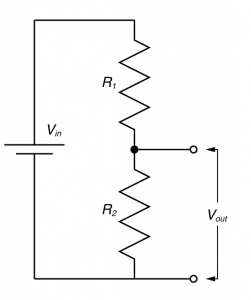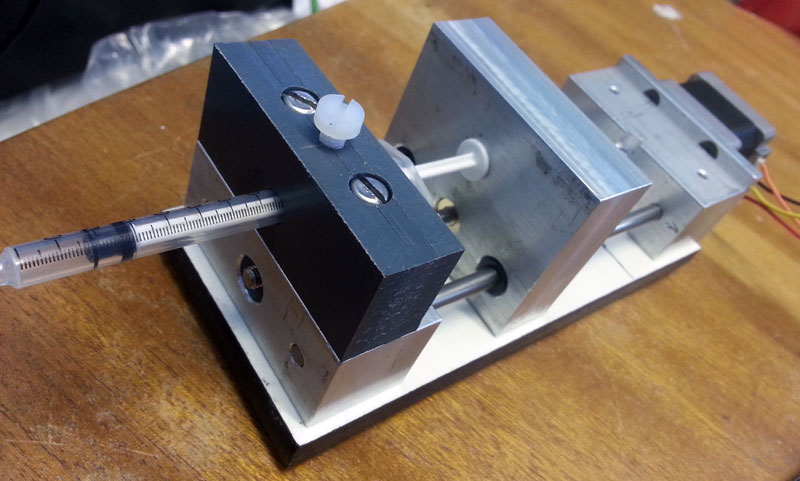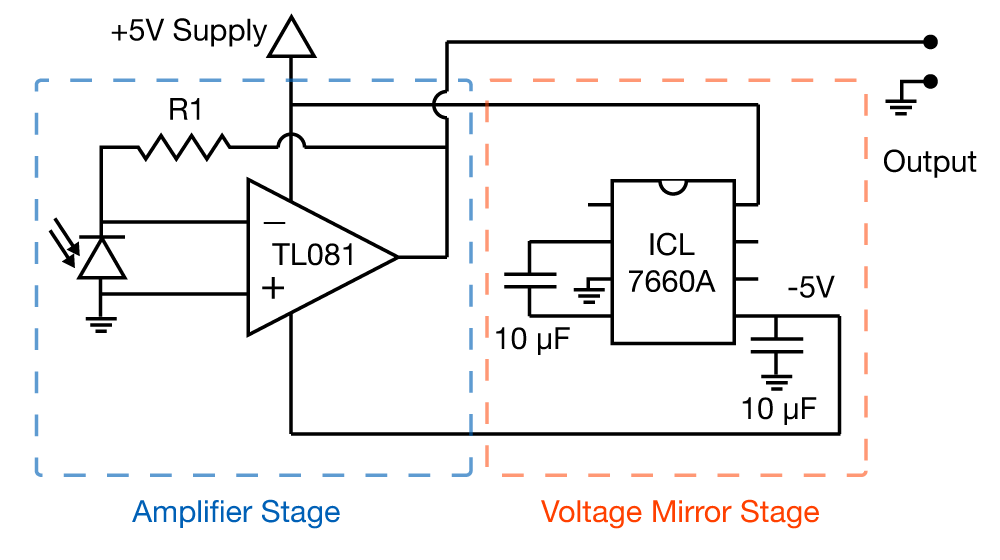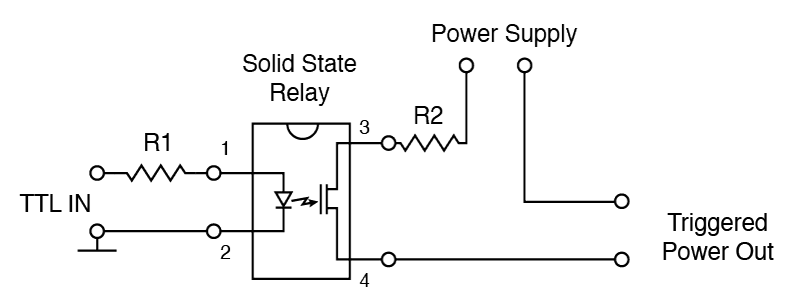Even though we are now in the era of optogenetics, electrical stimulation of excitable tissues is still common place in the lab. However, despite how common they are, I see that a lot of people don’t fully understand why they using some fancy expensive box to deliver the stimulus, rather than just, say, using the DAC output of your digitizer. The actual physics of why passing current through your tissue excites neurons/muscles is a bit more complex than you might think, but that’s not what I’m going to talk about. I’m going to talk about what a stimulus isolator is, and why we use them. Continue reading
Electronics
You need to understand the voltage divider!
In electronic design, the voltage divider is probably the most fundamental circuit motif. You would be hard pressed to find single circuit that doesn’t have one. But more importantly, it is a deeply useful concept for explaining the physiology of excitable cells, and for understanding the nature of electrophysiological techniques. I’ve talked about voltage dividers in several of my posts, but one of my readers said I should explain what they are so that’s what I’m going to do now.
Series Resistance. Why it’s bad.
At the very start of my Masters, my first experiments appeared to show that the histamine H3 receptor inhibited the release of GABA in the neocortex. It turns out, this was all lies. It was all lies because of series resistance, a concept I had vaguely heard of, but didn’t understand. If you’re just starting electrophysiology this post is for you. The hope is that by the end of this post, you will understand series resistance, and you’ll understand why it is extremely important to monitor it religiously, whether you’re performing voltage clamp or current clamp recordings.
Continue reading
Quick and simple analog visualization.
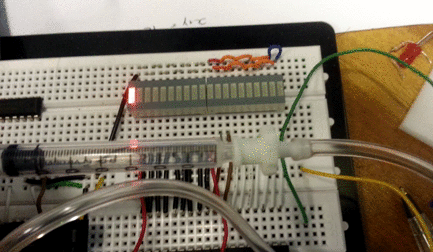 Sometimes you just need to get a notion about whether a signal is big, little or non-existent, rather than its exact value to 4 decimal places. In my case, I wanted a manometer, so I could tell how much pressure the students were apply by mouth when learning to patch cells. I could also imagine someone wanting to measure the DC value of a voltage that they were applying a digital high pass filter to, just to make sure it didn’t go out of the range of the DAQ. I’ve seen people use cheap multimeters for such task, In this case, I offer a solution, that is perhaps more modular, and certainly cheaper.
Sometimes you just need to get a notion about whether a signal is big, little or non-existent, rather than its exact value to 4 decimal places. In my case, I wanted a manometer, so I could tell how much pressure the students were apply by mouth when learning to patch cells. I could also imagine someone wanting to measure the DC value of a voltage that they were applying a digital high pass filter to, just to make sure it didn’t go out of the range of the DAQ. I’ve seen people use cheap multimeters for such task, In this case, I offer a solution, that is perhaps more modular, and certainly cheaper.
A cheap LoFi speaker – Impedance II
I needed to make a little speaker. The real reason? Because of a retro gaming session at work. However, there have been several times that I’ve needed a small cheap speaker that was suitable for delivering simple stimuli. I thought I would post a schematic and take this opportunity to give you an example of how Matlab can make impedance calculations easier, something I’ve talked a little about before.
Trying to make the worlds cheapest syringe pump/linear drive
99% of things you buy from scientific suppliers are violently overpriced. Peristaltic pumps for $2000 that only contain $50 worth of equipment. Homeothermic blankets should only cost about three fifty. But the one that has always annoyed me are syringe drivers. These are nothing more than a stepper motor, a lead screw and a bit of electronics. The budget ones tend to start at around $300, and they go up to ten times that. I’m not standing for that, and neither should you. So I wanted to make one myself.
Impedance: A beginner’s guide -or- how I learned to stop worrying and let Matlab do the work.
Impedance is a concept that some people say they understand, but deep in their heart of hearts they know they don’t. I’m going to try and help you get a more helpful conceptual understanding of it. But to try and entice you into learning about it, I’m going to pose you a question: where does a sine wave go, when it’s amplitude is zero?
Continue reading
Detecting Light: Simple Photodiode Amplifier
Light is great stuff. It provides energy to the ecosystem stuff, preventing earth from being a blue and grey desolate rock, but more importantly, it is really helpful in the lab. I use it mainly in a beam break manner, so I can tell whether something is in a region of space, without touching it. But it can also be used to detect distance, movement, temperature and pretty much anything else you can think of, so long as you can detect the light accurately enough. And this is exactly what I’m about to teach you: how to detect light, amplify it, and make it work for you. The following circuit isn’t designed for ulta-high precision, but it can be made with less than 10 components, and only requires one design decision.
Triggering things…
For my first post I’m going to gift to you knowledge of what may be the single most useful circuit you will ever see. I have made over a dozen of these for various people, and its uses are never ending. Do not be scared if you’ve never made a circuit before. This is so simple. And you will feel like an absolute master when you’ve finished it.
I give you, The Triggerer
